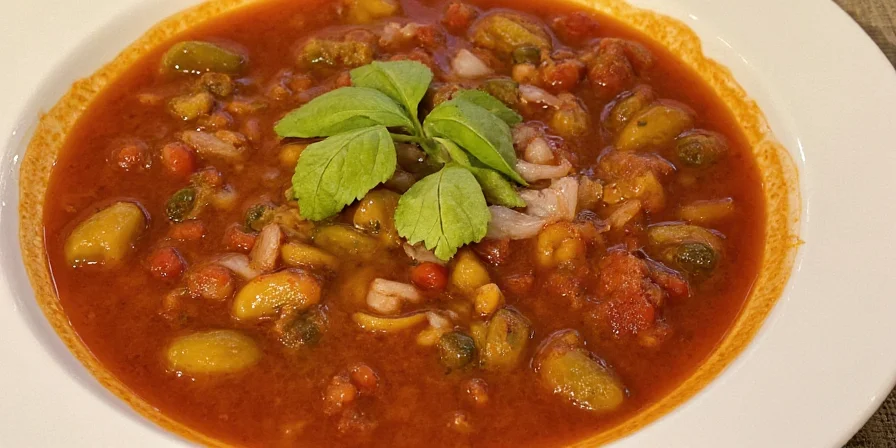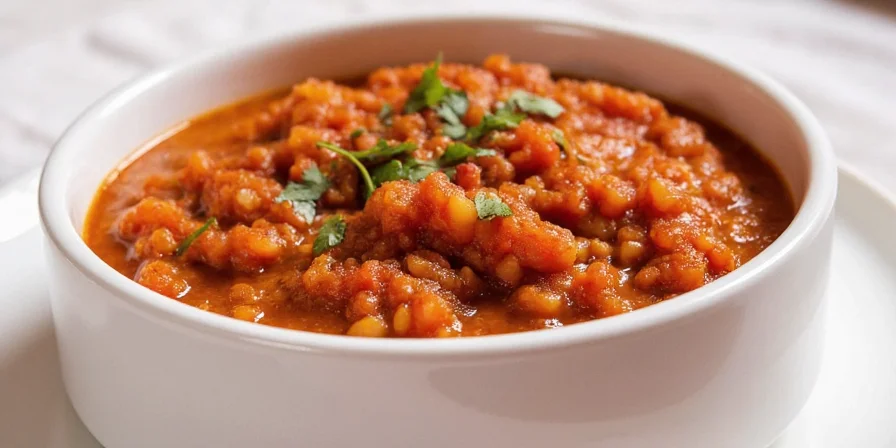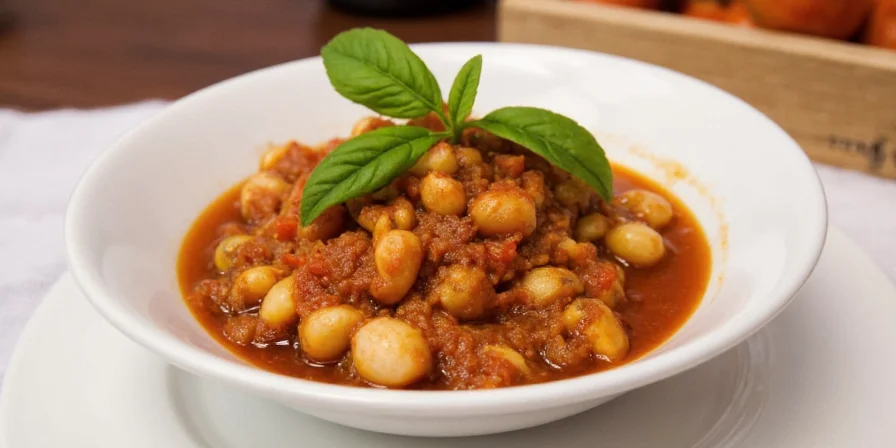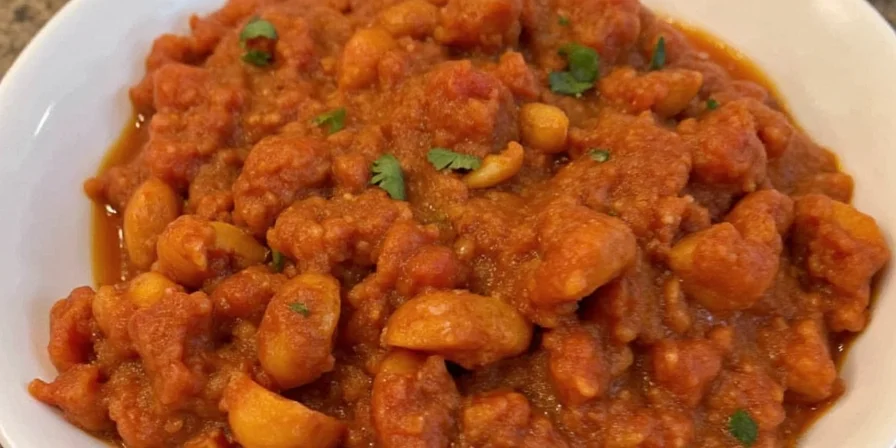Sofrito is a flavor base made from sautéed aromatics that forms the foundation of countless dishes across Mediterranean and Latin American cuisines. This simple mixture of onions, garlic, peppers, tomatoes, and herbs cooked in oil creates complex flavors that transform ordinary meals into extraordinary culinary experiences. Here's exactly how to make it, why it works, and how to use it in your cooking.
Whether you're searching for a basic sofrito recipe or want to understand the differences between Spanish, Puerto Rican, and Italian variations, this guide delivers practical, step-by-step instructions you can implement immediately. Skip the confusing explanations and get straight to making authentic sofrito that elevates your cooking.
What Is Sofrito? Your Quick-Start Guide
Forget complicated definitions — sofrito is simply the aromatic foundation that gives depth to dishes like paella, rice and beans, and stews. Think of it as the secret weapon professional chefs use to build layers of flavor from the very beginning of cooking.
| Region | Key Ingredients | Texture | Use Case |
|---|---|---|---|
| Spain | Onion, garlic, paprika, olive oil | Smooth paste | Rice dishes, stews |
| Puerto Rico | Onion, garlic, culantro, bell pepper, ajíes, tomato | Chunky liquid blend | Soups, beans, rice |
| Italy | Onion, carrot, celery, olive oil (chili in southern variations) | Sauteed solids | Pasta sauces, braises |
| Mexico | Tomato, chiles, garlic, onion | Thick sauce | Tamales, moles, salsas |
| Catalonia (Spain) | Tomato, olive oil, garlic | Smooth paste | Pasta, fish, meat |

Basic Sofrito Recipe: 20 Minutes to Flavor Heaven
Follow this simple recipe to make authentic sofrito that works for most dishes. This Spanish-style version serves as the perfect starting point before exploring regional variations:
What You'll Need
- 2 cups finely chopped onions (about 2 medium onions)
- 6 garlic cloves, minced
- 1 large green bell pepper, finely chopped
- 2 ripe tomatoes, peeled and chopped
- 1/4 cup olive oil
- 1 teaspoon paprika (add after 5 minutes of cooking)
- Salt to taste
Step-by-Step Instructions
- Prep ingredients: Finely chop all vegetables to ensure even cooking
- Heat oil: Warm olive oil in a large skillet over medium-low heat
- Cook aromatics: Add onions and bell pepper, sauté for 8-10 minutes until soft but not browned
- Add garlic: Stir in garlic and cook for 2 minutes (don't let it brown)
- Add tomatoes: Incorporate tomatoes and paprika, cook for 5-7 minutes until thickened
- Season: Add salt to taste and cook 2 more minutes
- Cool and store: Let cool completely before refrigerating or freezing

Regional Variations: Which Sofrito Should You Make?
Understanding the key differences between regional sofritos helps you choose the right version for your dish:
Spanish Sofrito
The classic version used in paella and many Spanish dishes. Made with onions, garlic, tomatoes, and olive oil, cooked until smooth. Perfect for rice dishes where you want a deep flavor foundation without visible vegetable pieces.
Puerto Rican Sofrito
A vibrant green blend of onions, garlic, culantro, bell peppers, and ajíes. Typically blended rather than sautéed, this version works best in bean dishes and stews where you want visible flecks of green throughout.
Italian Sofrito (Soffritto)
Often called soffritto in Italy, this version uses onions, carrots, and celery. The French mirepoix is very similar. Ideal for tomato-based pasta sauces and meat braises where you want a subtle background flavor.

Top 5 Sofrito Mistakes Home Cooks Make (And How to Avoid Them)
- Burning the garlic: Garlic turns bitter when cooked above 375°F. Always add it after onions have softened and keep heat at medium-low.
- Rushing the process: Sofrito needs 15-20 minutes of slow cooking to develop flavor. Don't crank up the heat to speed things up.
- Skipping the oil seal: When storing, always cover the top with a thin layer of oil to prevent freezer burn and preserve flavor.
- Using dried herbs: Fresh herbs like culantro or cilantro make a huge difference. Dried versions won't give you the same flavor profile.
- Mixing regional styles: Spanish sofrito shouldn't contain bell peppers, and Italian soffritto doesn't include tomatoes. Stick to authentic ingredient combinations for best results.

How to Store and Use Your Sofrito
Maximize your cooking efficiency with these storage and usage tips:
Storage Guide
- Refrigerator: Store in an airtight container with oil layer on top for 10-14 days
- Freezer: Portion into ice cube trays, freeze solid, then transfer to vacuum-sealed bags for up to 6 months
- Room temperature: Never store sofrito at room temperature — it contains fresh ingredients that spoil quickly
How Much to Use
- Rice dishes: 1/4 cup per cup of uncooked rice
- Bean recipes: 1/2 cup per pound of dried beans
- Stews and soups: 1/3 cup per quart of liquid
- Sauces: 1/2 cup per batch of sauce

Frequently Asked Questions About Sofrito
Q: Can I make sofrito without a blender?
A: Absolutely. Finely mince all ingredients by hand and sauté for 15-20 minutes until soft and fragrant. Blending creates a smoother texture but isn't essential.
Q: How long does homemade sofrito last in the refrigerator?
A: Properly stored with an oil seal on top, sofrito lasts 10-14 days in the refrigerator. Always use a clean spoon when scooping to prevent contamination.
Q: What's the difference between sofrito and mirepoix?
A: Mirepoix (French/Italian) uses onion, carrot, and celery without tomatoes. Sofrito (Spanish/Latin) features garlic, tomatoes, and peppers. Mirepoix is typically cooked dry while sofrito uses oil as a key ingredient.
Q: Can I substitute jarred sofrito for homemade?
A: Yes, but check the ingredients. Many commercial versions contain preservatives and excess salt. Use 25% less than recipe calls for and adjust seasoning at the end.
Q: Why does my sofrito taste bitter?
A: Bitterness usually comes from burned garlic or paprika added too early. Keep heat at medium-low and add paprika after onions have softened (about 5 minutes into cooking).
Putting It All Together: Your Sofrito Action Plan
Start with the basic Spanish-style sofrito recipe above — it works for most dishes and introduces you to the technique without overwhelming complexity. Make a batch this weekend, freeze portions in ice cube trays, and you'll have flavor-building blocks ready whenever you need them.
Within just 20 minutes of preparation time, you'll transform your cooking with this essential technique that professional chefs rely on. Whether you're making a simple weeknight dinner or a special occasion meal, sofrito provides the flavor foundation that makes dishes truly memorable. Now that you know exactly how to make it right, there's no reason not to start using sofrito in your cooking today.











 浙公网安备
33010002000092号
浙公网安备
33010002000092号 浙B2-20120091-4
浙B2-20120091-4